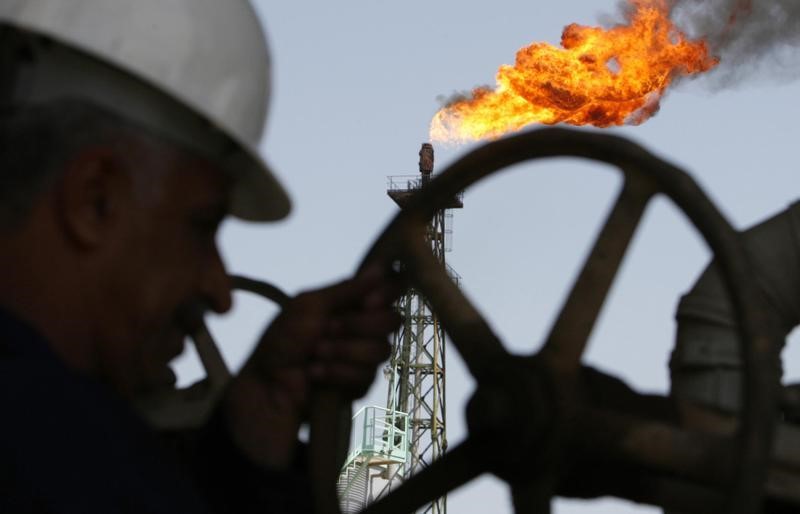Gold prices higher, remain near record highs on rate cut bets
* Buyers of Saudi oil scramble for alternatives, U.S.
exports up
* Brent jumps 20% in biggest percentage gain since '91 Gulf
crisis
* Attack on Saudi oil facilities cuts Saudi output by 5.7
mln bpd
* Aramco may take months to resume normal output volumes-
sources
* Trump approves release of U.S. oil reserves
(Adds details about market fundamentals, recasts throughout)
By Laila Kearney
NEW YORK, Sept 16 (Reuters) - Oil ended nearly 15% higher on
Monday, with Brent logging its biggest jump in over 30 years
amid record trading volumes, after an attack on Saudi Arabian
crude facilities cut the kingdom's production in half and fanned
fears of retaliation in the Middle East.
The attack heightened uncertainty in a market that had
become relatively subdued in recent months and now faces the
loss of crude from Saudi Arabia, traditionally the world's
supplier of last resort. A gauge of oil-market volatility hit
its highest level since December of last year, and trading
activity showed investors expect higher prices in coming months.
Brent crude LCOc1 , the international benchmark, settled at
$69.02 a barrel, rising $8.80, or 14.6%, its biggest one-day
percentage gain since at least 1988. Brent futures saw more than
2 million contracts traded, an all-time daily volume record,
Intercontinental Exchange spokeswoman Rebecca Mitchell said.
U.S. West Texas Intermediate (WTI) CLc1 futures ended at
$62.90 a barrel, soaring $8.05, or 14.7% - the biggest one-day
percentage gain since December 2008.
"The attack on Saudi oil infrastructure came as a shock and
a surprise," said Tony Headrick, an energy market analyst at St.
Paul, Minnesota, commodity brokerage CHS Hedging LLC. "I think
the tables abruptly shifted in the way of the supply outlook and
caught many who were short off-guard."
Saudi Arabia is the world's biggest oil exporter and, with
its comparatively large spare capacity, has been the supplier of
last resort for decades.
The weekend attack on state-owned producer Saudi Aramco's
crude-processing facilities at Abqaiq and Khurais cut output by
5.7 million barrels per day and threw into question its ability
to maintain oil exports. The company has not given a specific
timeline for the resumption of full output. Two sources briefed on Aramco's operations said a full
return to normal production "may take months."
“I don't think there really is enough to offset what is
going to be offline here for a period of time, and you don't
even know the quantity of time," said Joe McMonigle, energy
analyst at Hedgeye Research.
U.S. intelligence officials said Monday that evidence
pointed to Iran being behind the attack, raising the specter of
a response that could further unsettle world markets and global
supply.
President Donald Trump said he was in "no rush" to respond,
however, as he awaited more details. That marked a shift in tone
from a tweet sent by Trump on Sunday, when he said the United
States was "locked and loaded" and ready to respond.
The Chicago Board Options Exchange's Crude Oil Volatility
Index .OVX , a gauge of options premiums based on moves in the
U.S. oil exchange traded fund, rose to 77.17, its highest level
since December last year.
The attacks and subsequent hit to supply are likely to keep
prices elevated for some time. Crude cargo booking activity and
freight rates for shipments from the U.S. Gulf Coast rose over
the weekend and on Monday, a ship broker said, and regional Gulf
crude prices traded over-the-counter were higher in anticipation
of bids for more U.S. shipments. The United States exports about 3 million barrels of oil a
day and could boost those shipments further.
Major importers of Saudi crude, such as India, China, Japan
and South Korea, will be the most vulnerable to any supply
disruption. South Korea has already said it would consider
releasing oil from its strategic reserves.
Trump approved the release of oil from the U.S. Strategic
Petroleum Reserve, which holds more than 640 million barrels of
crude oil.
Saudi oil exports will continue as normal this week as the
kingdom taps into stocks from its large storage facilities, an
industry source briefed on the developments told Reuters.
Still, the attack has raised concerns about how
long the kingdom will be able to maintain oil shipments and
launched a scramble by refiners in leading Asian consumer
countries to find alternatives. The initial surge in prices Sunday was the biggest for Brent
crude since the 1990-1991 Gulf crisis, before pulling back as
various nations said they would tap emergency supplies to keep
the world supplied with oil.
Members of the International Energy Agency are required to
keep 90 days of imports in storage to offset supply shocks.
<^^^^^^^^^^^^^^^^^^^^^^^^^^^^^^^^^^^^^^^^^^^^^^^^^^^^^^^^^^^
Global oil prices spike over 10% after attacks on Saudi Arabia
oil facilities https://tmsnrt.rs/31CeWsA
Saudi Arabia crude exports to Asia vs rest of the world https://tmsnrt.rs/31qczsT
FACTBOX: Saudi oil attack puts spotlight on global stockpiles
Saudi crude buyer interactive: https://tmsnrt.rs/31oLW7G
Top global oil consumers interactive: https://tmsnrt.rs/31szYKj
^^^^^^^^^^^^^^^^^^^^^^^^^^^^^^^^^^^^^^^^^^^^^^^^^^^^^^^^^^^>
